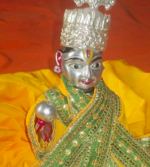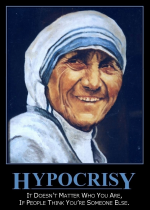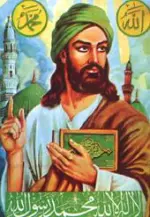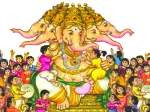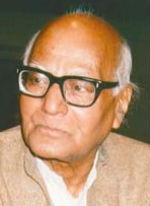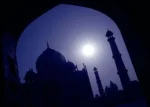 “It is to Bhyrappa’s credit that he has gone beyond superficialities by tracing the horrors of Islamic rule and Jihad to the sources themselves — the Quran and the Hadith. He has consulted several Islamic scholars and lived with Muslim friends to learn how Indian Muslims today practice their faith and also how they relate to their history. As a result, Aavarana is more than a novel about Muslim India; it is also a primer on the beliefs and practices that condition the life and thought of Indian Muslims. Aavarana owes a major debt to the pioneering work of the late Ram Swarup, Sita Ram Goel and their followers, which he duly acknowledges.” – Dr. N.S. Rajaram
“It is to Bhyrappa’s credit that he has gone beyond superficialities by tracing the horrors of Islamic rule and Jihad to the sources themselves — the Quran and the Hadith. He has consulted several Islamic scholars and lived with Muslim friends to learn how Indian Muslims today practice their faith and also how they relate to their history. As a result, Aavarana is more than a novel about Muslim India; it is also a primer on the beliefs and practices that condition the life and thought of Indian Muslims. Aavarana owes a major debt to the pioneering work of the late Ram Swarup, Sita Ram Goel and their followers, which he duly acknowledges.” – Dr. N.S. Rajaram
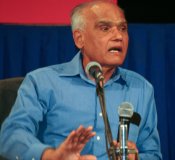 Upon reading S.L. Bhyrappa’s recent Kannada novel Aavarana, Dan Brown’s best-selling novel The Da Vinci Code springs naturally to mind. Both have as their subject the suppression of true history and the propagation of a myth by powerful interests. In Da Vinci Code, the villain is the Catholic Church and its modern secret and sinister arm the Opus Dei. In Bhyrappa’s novel, the villain is the collective of politically correct historians and ‘intellectuals’ who out a combination of greed and fear have suppressed the truth about Islam and its record in India. While these intellectuals—called dhimmis by the Egypt-born scholar Bat Ye’or—can boast of no Vatican or Opus Dei, they do form a powerful clique in India enjoying the support of successive governments who find it politically expedient to appease Islam and conceal the truth about its record and teachings. As this phenomenon is by no means limited to India, Bhyrappa’s Aavarana, and the public reaction to it should be of interest far beyond its intended readership.
Upon reading S.L. Bhyrappa’s recent Kannada novel Aavarana, Dan Brown’s best-selling novel The Da Vinci Code springs naturally to mind. Both have as their subject the suppression of true history and the propagation of a myth by powerful interests. In Da Vinci Code, the villain is the Catholic Church and its modern secret and sinister arm the Opus Dei. In Bhyrappa’s novel, the villain is the collective of politically correct historians and ‘intellectuals’ who out a combination of greed and fear have suppressed the truth about Islam and its record in India. While these intellectuals—called dhimmis by the Egypt-born scholar Bat Ye’or—can boast of no Vatican or Opus Dei, they do form a powerful clique in India enjoying the support of successive governments who find it politically expedient to appease Islam and conceal the truth about its record and teachings. As this phenomenon is by no means limited to India, Bhyrappa’s Aavarana, and the public reaction to it should be of interest far beyond its intended readership.
 The comparison between Aavarana and Da Vinci Code should not be taken too far, for Bhyrappa’s treatment and also the truth—actually truths—he brings out are far more real than the mystery and adventure that make up the story of Dan Brown’s novel. It is not clear if Bhyrappa was influenced by Dan Brown’s novel, but seems unlikely. He does not mention it in his extensive bibliography (for a novel). Also the dark theme and the brooding grandeur of Aavarana is wholly different from the cheerful if irreverent mood that prevails in Da Vinci Code. Not that Aavarana is lacking in humor, but the atmosphere is totally different. It helps to keep in mind that Bhyrappa’s doctorate was in philosophy and until his retirement, he taught philosophy at several universities.
The comparison between Aavarana and Da Vinci Code should not be taken too far, for Bhyrappa’s treatment and also the truth—actually truths—he brings out are far more real than the mystery and adventure that make up the story of Dan Brown’s novel. It is not clear if Bhyrappa was influenced by Dan Brown’s novel, but seems unlikely. He does not mention it in his extensive bibliography (for a novel). Also the dark theme and the brooding grandeur of Aavarana is wholly different from the cheerful if irreverent mood that prevails in Da Vinci Code. Not that Aavarana is lacking in humor, but the atmosphere is totally different. It helps to keep in mind that Bhyrappa’s doctorate was in philosophy and until his retirement, he taught philosophy at several universities.
In his preface to Aavarana, Bhyrappa states what led to his writing the novel Aavarana (my translated summary of Bhyrappa’s words):
“This is my second historical novel. My earlier work Saartha was an attempt to portray in novel form the transitional period (from the old to the medieval) that took place in the eight century AD. In Aavarana I have made a similar attempt for the long period after Saartha to the present. This period of Indian history, though rich in records is in the grip of aavarana (concealment and suppression) forces. The Saartha period presents no such problems. One can write the truth without fear. It is very different with the Aavarana period. One encounters barriers of aavarana at every step. I had therefore to adopt a radically different approach and narrative technique.
“…As things stand today, forces of aavarana hold both the historian and history in their grip. How can historical truth flourish when the historian stands as the main barrier to its discovery? … Truth and beauty, that is to say the link between truth and art, as well as the differences—this has been the subject of my research (in his doctoral dissertation and later as academic). Later as a novelist, I have had to grapple with this challenge at every stage of my creative life.
“In writing historical fiction, I am constantly aware of my responsibility for being true to history. One can write fiction about contemporary issues without research. But in a historical novel every important detail must be supported by research. A writer’s ultimate responsibility is to historical truth. When there is a conflict between beauty and truth, the writer must choose truth over beauty.”
From this discussion it is clear that Bhyrappa is a serious thinker (as befits an academic philosopher) who has studied the subject, often going to the primary sources and major research works. His bibliography is quite extensive for a novel and artfully introduced as part of the narrative. (A surprising omission is the eight volume magnum opus History of India as Told by Its Own Historians compiled by Eliot and Dowson. This was corrected when it was pointed out to him.)
 It is to Bhyrappa’s credit that he has gone beyond superficialities by tracing the horrors of Islamic rule and Jihad to the sources themselves—the Quran and the Hadith. He has consulted several Islamic scholars and lived with Muslim friends to learn how Indian Muslims today practice their faith and also how they relate to their history. As a result, Aavarana is more than a novel about Muslim India; it is also a primer on the beliefs and practices that condition the life and thought of Indian Muslims. Aavarana owes a major debt to the pioneering work of the late Ram Swarup, Sita Ram Goel and their followers, which he duly acknowledges.
It is to Bhyrappa’s credit that he has gone beyond superficialities by tracing the horrors of Islamic rule and Jihad to the sources themselves—the Quran and the Hadith. He has consulted several Islamic scholars and lived with Muslim friends to learn how Indian Muslims today practice their faith and also how they relate to their history. As a result, Aavarana is more than a novel about Muslim India; it is also a primer on the beliefs and practices that condition the life and thought of Indian Muslims. Aavarana owes a major debt to the pioneering work of the late Ram Swarup, Sita Ram Goel and their followers, which he duly acknowledges.
In this regard, as in much else, Aavarana is a much more serious work than Dan Brown’s novel. To begin with, the readers of Da Vinci Code don’t carry the burden of history to the same extent as Hindus and Muslims. The Catholic Church sees Dan Brown’s novel as an assault on its doctrine and its version of history, but the largely secular West can shrug it off and treat it as entertainment. To understand the potential impact of Aavarana, one has to imagine what Da Vinci Code would have provoked had it appeared in Europe in Martin Luther’s time. When Aavarana appears in English—as one hopes it will—the reaction even in the West, is likely to be much more vociferous than what we have seen against Da Vinci Code, especially among the Muslims and their apologists.
India today is caught in a time warp. Though secular in name, its people, Muslims in particular, are still trapped in the medieval ethos of the Islamic past. Driven by a combination of political expediency and fear of violence, successive governments have refrained from rocking the boat. Left dominated intellectuals have turned Islam negationism (Jihad negationaism)—comparable to Holocaust negationism—into official ideology. Any work that challenges the cozy myth of peaceful Hindu-Muslim coexistence is bound to raise their ire. Bhyrappa is the bete noir of this brand of intellectuals. He sees them as enemies of truth and is not afraid to say so. They are the real villain of his novel. This background is necessary to fully appreciate the novel as well as the ferocity of the denunciations that will soon be coming.
 To return to Da Vinci Code, what Brown has rattled is the theological construct called the Gospels, which the Church also projects as authentic history. The suppression of the true origins of Christianity is something that most scholars including many theologians are prepared to acknowledge. But Brown goes beyond this to the claim that Jesus survived the crucifixion and left a bloodline by fathering Mary Magdalene’s children. This according to Da Vinci Code led to the Merovingian dynasty that went on to rule what is now France. This rests on flimsy evidence at best, though there is a persistent tradition in the Provence region of France that Mary Magdalene did migrate to southern France from Palestine.
To return to Da Vinci Code, what Brown has rattled is the theological construct called the Gospels, which the Church also projects as authentic history. The suppression of the true origins of Christianity is something that most scholars including many theologians are prepared to acknowledge. But Brown goes beyond this to the claim that Jesus survived the crucifixion and left a bloodline by fathering Mary Magdalene’s children. This according to Da Vinci Code led to the Merovingian dynasty that went on to rule what is now France. This rests on flimsy evidence at best, though there is a persistent tradition in the Provence region of France that Mary Magdalene did migrate to southern France from Palestine.
The main source for Brown’s novel is the speculative work The Holy Blood and the Holy Grail by Baigent, Leigh and Lincoln that appeared nearly twenty years ago. More substantial is Brown’s claim that Mary Magdalene was a much more important figure in the early Church, even called the ‘Apostle of Apostles.’ She was defamed by the Church and turned into the prototypical sinner who repents and is forgiven by Jesus. The Vatican may not accept it, but the Nag Hammadi Manuscripts, known also (wrongly) as the Gnostic Gospels, do suggest that she was an important figure on par with the other apostles. (For the record, Gnostic Christians were not Christians and Gnostic Gospels are not gospels, if we mean by gospel a theological biography of Jesus.)
A second thread in Dan Brown’s novel is the destruction of the feminine divine by early Church leaders and the institutionalisation of anti-feminism by the Vatican. The idea that Christianity was originally not anti-feminist and Jesus was a feminist is a favourite theme of feminist theologians like Barbara Thiering. But this theory does not wash unless we make early Christianity more Pagan than Jewish, and turn Jesus into a Pagan sage. These theologians and writers don’t seem to see that the feminine divine is incompatible with monotheism. Religions of the Book—Judaism, Christianity and Islam—will never allow their One God to be usurped by a Goddess. The exaltation of Mary Magdalene too has its limits: she can only reflect Jesus’s glory, never exist independently of him.
 Be as it may, Da Vinci Code may still be read as an entertaining mystery thriller untroubled by its subversive message—some would say its hidden agenda. He leaves untouched the darker aspects of the medieval history of Europe, especially the horrors of the Albigensian Crusade launched by Pope Innocent III that destroyed the brilliant Provencal civilization in what amounted to genocide of the followers of the Albigensian heresy. In place of this real history Dan Brown gives us a romanticized version of the Knights Templars as preservers of the secret and its possibly fictional successor Priory of Sion as the protectors of the Merovingian royal line. So, for all the turmoil it has caused, Da Vinci Code remains entertaining fiction that causes no great anguish.
Be as it may, Da Vinci Code may still be read as an entertaining mystery thriller untroubled by its subversive message—some would say its hidden agenda. He leaves untouched the darker aspects of the medieval history of Europe, especially the horrors of the Albigensian Crusade launched by Pope Innocent III that destroyed the brilliant Provencal civilization in what amounted to genocide of the followers of the Albigensian heresy. In place of this real history Dan Brown gives us a romanticized version of the Knights Templars as preservers of the secret and its possibly fictional successor Priory of Sion as the protectors of the Merovingian royal line. So, for all the turmoil it has caused, Da Vinci Code remains entertaining fiction that causes no great anguish.
Bhyrappa’s Aavarana gives the reader no such respite from historical horrors. It narrates the story of a Rajput prince and his wife captured in the siege of Deoghar and turned into slaves in Muslim courts in the time of the Mogul Emperor Aurangazeb (reigned 1659–1707). He later accompanies a Mogul officer and witnesses the destruction of the great Vishwanath Temple in Benares and witnesses the horrors inflicted by Moguls on the Hindus. Aavarana describes these horrors in vivid detail and understated language, leaving little to the imagination. There is no hyperbole to obscure facts, which makes the horror all the more real.
 To bring out how these horrors are whitewashed and even concealed by modern negationists (aavarana forces in his words), Bhyrappa introduces a contemporary character Lakshmi-Razia, a Muslim convert who returns to Hinduism after being shocked by the truth about India’s Islamic past. She receives her first jolt when she visits the famous ruins of Vijayanagar (destroyed in 1565), now a World Heritage Site, as a script writer for a documentary. Soon her father, whom she had not seen since her conversion to Islam dies and she inherits his papers. She finds that her father in her absence had made a detailed study of Islam and its record in India. Using his notes she writes and publishes the novel about the captured Rajput prince in Mogul service noted earlier.
To bring out how these horrors are whitewashed and even concealed by modern negationists (aavarana forces in his words), Bhyrappa introduces a contemporary character Lakshmi-Razia, a Muslim convert who returns to Hinduism after being shocked by the truth about India’s Islamic past. She receives her first jolt when she visits the famous ruins of Vijayanagar (destroyed in 1565), now a World Heritage Site, as a script writer for a documentary. Soon her father, whom she had not seen since her conversion to Islam dies and she inherits his papers. She finds that her father in her absence had made a detailed study of Islam and its record in India. Using his notes she writes and publishes the novel about the captured Rajput prince in Mogul service noted earlier.
This lands her in all kinds of trouble, beginning with her former colleagues and friends, especially her mentor, one Professor Krishna Shastry. Her novel has blown their cover and they use their influence to have the novel banned and she is forced to go into hiding. In this, Bhyrappa has given a hint of what may befall his own novel for the same crime: he has exposed the horrors to a wide audience and has also punctured the scholarly pretensions of Jihad apologists masquerading as intellectuals.
It is unlikely that Bhyrappa and his latest novel will suffer the same fate as the novelist-hero and her novel in Aavarana. He is too well-known a figure with a huge following. The political climate has also changed. But the experience of many recent authors suffering a similar fate is too fresh in memory for readers to miss the main points of his novel: horrors of Islamic rule and the collusion of aavarana forces.
In summary, with his latest novel Aavarana Dr. S.L.Bhyrappa has produced a major literary work distinguished by skill, scholarship and courage. One hopes that it will soon be translated into other languages and made available to a wide audience. Of one thing we may be certain: Aavarana will be “cussed and discussed” for a long time to come, to borrow a phrase from Lincoln. – Folks Magazine, 14 May 2012
Filed under: india | Tagged: dan brown, hinduism, historical novels, history, imperialism, india, indian politics, islam in india, jihad, literature, mughal dynasty, opus dei, s.l. bhyrappa, sita ram goel, temples, the da vinci code | 1 Comment »


